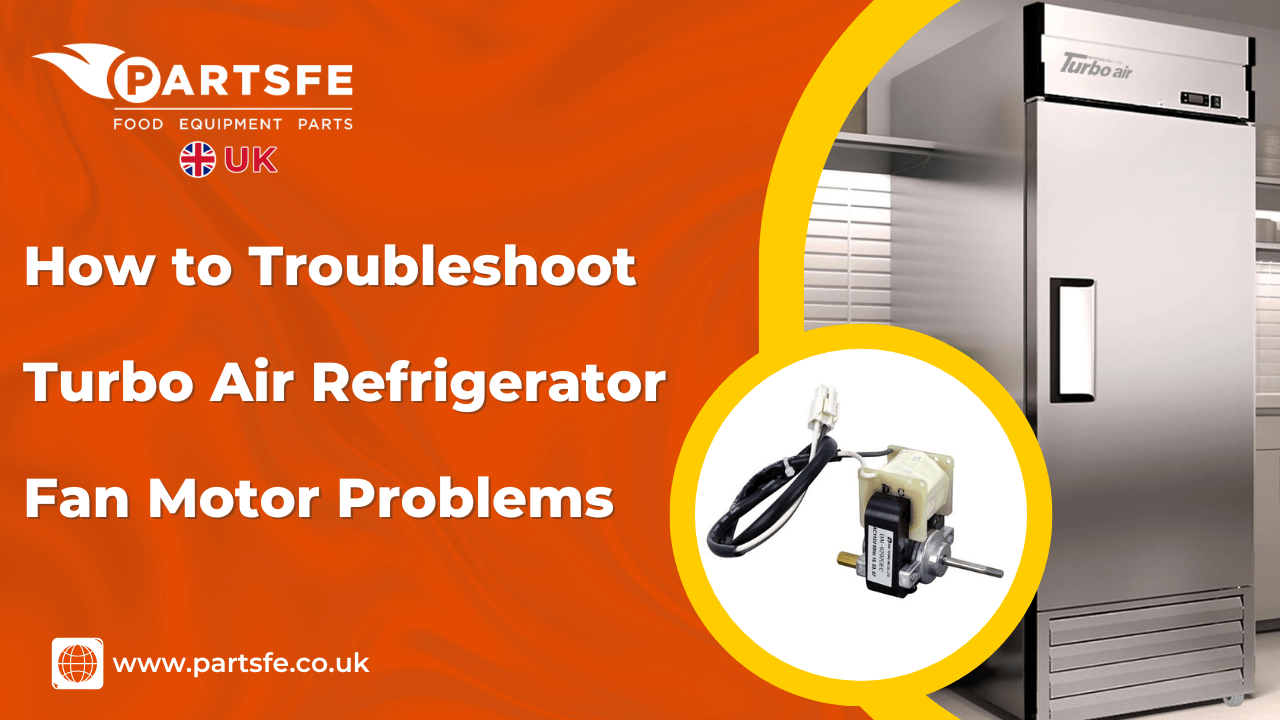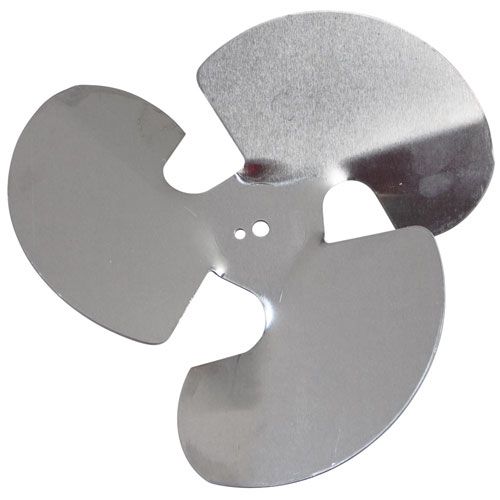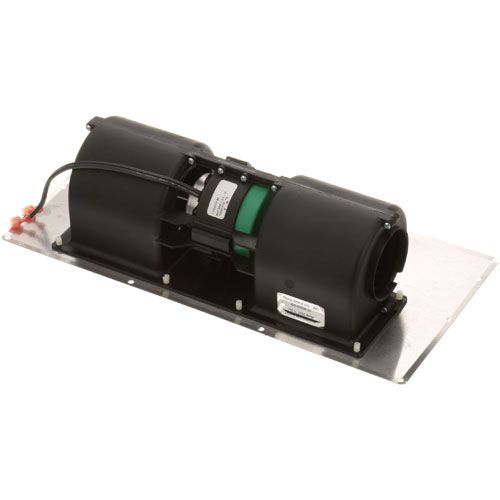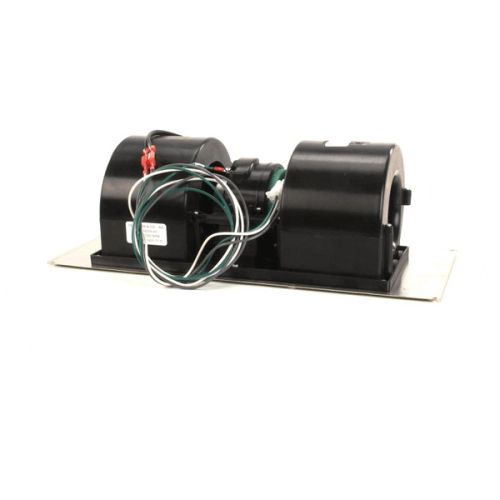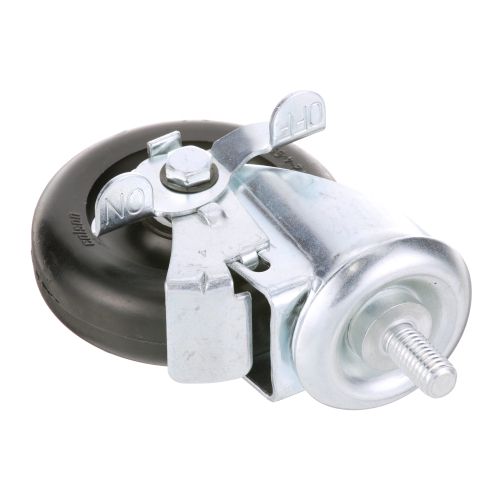How to Troubleshoot Turbo Air Refrigerator Fan Motor Problems
A properly functioning refrigerator is main for any successful commercial kitchen. When a critical component like the turbo fan motor in your Turbo Air refrigerator begins to show signs of trouble, it can disrupt your operations and lead to significant losses due to inadequate cooling and potential food spoilage. This guide explains the symptoms of a faulty turbo air fan motor, provides detailed, step-by-step troubleshooting procedures, and explores other components that can mimic fan motor problems. Find turbo air refrigeration parts and turbo air replacement parts. Maintaining your turbo air unit with genuine turbo air refrigerator parts is key to its longevity and efficient performance.
Understanding Turbo Air Refrigerator Fan Motor Issues
Turbo Air refrigerators utilize fan motors in both the fresh food and freezer compartments. The evaporator turbo fan motor in the refrigerator section is responsible for circulating cold air throughout the cabinet, ensuring a consistent temperature and preventing warm spots. In the freezer section, the fan assists in the distribution of cold air and plays a vital role in the automatic defrost cycle.
A malfunctioning turbo air fan motor directly impacts airflow, leading to a cascade of problems, including temperature fluctuations and reduced cooling capacity. Effective turbo air refrigerator troubleshooting often begins with a thorough examination of the fan motor and its associated components.
Symptoms of a Faulty Turbo Air Refrigerator Fan Motor
Recognizing the early warning signs of a failing turbo air fan motor is crucial for timely intervention.
-
Uneven cooling and warm spots: One of the most noticeable indicators of a problematic turbo air fan motor is inconsistent cooling within the refrigerator. You might find that items on certain shelves are not as cold as others, or that the entire refrigerator compartment feels warm despite the thermostat being set correctly.
-
Unusual noises: A healthy turbo fan motor operates quietly. If you start hearing grinding, buzzing, rattling, or squealing sounds coming from your Turbo Air refrigerator, it could be a sign of a failing fan motor or an obstruction in the fan blades.
-
Excessive frost or ice buildup: In the freezer compartment, a properly functioning evaporator fan helps to keep the evaporator coils free of excessive ice buildup by circulating air during the defrost cycle.
-
Refrigerator not cooling adequately: In more severe cases, a completely failed turbo air fan motor can lead to the refrigerator not cooling at all, even if the compressor is running.
-
Fan not running: The most direct symptom is when the fan simply does not turn on when it should. You can often hear the fan running when the refrigerator door is open.
Steps to Troubleshoot Turbo Air Refrigerator Fan Motor
Troubleshooting your turbo air fan motor requires careful steps to ensure safety and accurate diagnosis. Always begin by disconnecting the refrigerator from the power source to prevent an electric shock.
-
Access the fan motor: The evaporator fan motor is located behind a panel in the freezer compartment. You may need to remove shelving and the back panel to access it. The condenser fan motor is usually located near the compressor at the bottom rear of the refrigerator.
-
Visual inspection for obstructions: Once you have access to the fan, visually inspect the fan blades and the area around the motor for any obstructions. Dust, ice buildup, food packaging, or other debris can prevent the fan from spinning freely.
-
Inspect and clean fan blades: Examine the fan blades for any signs of damage, such as cracks or bends. If the blades are dirty, gently clean them with a damp cloth. Ensure the blades are securely attached to the motor shaft.
-
Manual fan blade test: With the power still disconnected, try to spin the fan blades manually. They should spin freely with minimal resistance. If they are stiff, wobbly, or do not spin at all, it could indicate a problem with the motor bearings.
-
Check for ice buildup on evaporator coils: If you are troubleshooting the evaporator fan, check the evaporator coils behind the fan for excessive ice buildup. Significant ice can prevent the fan from turning. If the coils are heavily iced, you will need to defrost the unit manually.
-
Test the fan motor: If there are no visible obstructions or ice buildup, and the blades spin freely, you can perform a test with power restored, exercising extreme caution. If the fan still doesn't run, the motor is likely faulty.
-
Test motor continuity: For a more definitive test of the fan motor itself, you can use a multimeter to check for continuity and resistance. You will need to consult your refrigerator's service manual for the specific wiring diagram and expected resistance values.
-
Inspect wiring and connections: Examine the wiring harness and connectors leading to the fan motor for any signs of damage, such as frayed wires, burn marks, or loose connections.
When the Problem Isn’t the Motor: Other Components to Check
It's important to remember that the symptoms you are experiencing may not always be due to a faulty turbo air fan motor. Other components within the refrigeration system can cause similar issues:
-
Dirty condenser coils: The condenser coils, usually located at the bottom or rear of the refrigerator, dissipate heat from the refrigerant. If these coils are covered in dust and debris, the system has to work harder, leading to reduced cooling efficiency and potentially impacting the performance of both the condenser and evaporator fans.
-
Faulty door gaskets: Damaged or worn door seals allow warm air to enter the refrigerator and freezer compartments. This causes the cooling system to work continuously to maintain the set temperature, putting extra strain on the components, including the fan motors. Inspect your door gaskets for cracks, tears, or signs of wear, and ensure they are sealing properly.
-
Defrost system issues: The automatic defrost system includes a defrost heater, a defrost thermostat, and a defrost timer or control board. If any of these components fail, the evaporator coils can become covered in ice, preventing the evaporator turbo fan motor from circulating air. While the fan motor itself may be functional, it cannot perform its job due to the ice obstruction.
-
Faulty temperature control thermostat or sensor: If the temperature control thermostat or sensor is malfunctioning, it may not be accurately reading the internal temperature of the refrigerator.
-
Start relay or capacitor problems: If your refrigerator's compressor is attempting to start but quickly shuts off, it could be a problem with the start relay or start capacitor. While these components don't directly affect the fan motor's operation, they are essential for the cooling cycle.
Fixing or Replacing the Turbo Air Refrigerator Fan Motor
If your troubleshooting steps have confirmed that the turbo air fan motor is indeed faulty, replacement is typically the necessary course of action. Fan motors are generally not repairable.
-
Identify the correct replacement part: It is crucial to obtain the correct turbo air replacement parts for your specific refrigerator model. You can often find genuine turbo air refrigeration parts, turbo air freezer parts, and turbo air refrigerator parts.
-
Gather necessary tools: You will need basic tools such as screwdrivers (Phillips and flathead), a nut driver or socket set, pliers, and possibly a multimeter.
-
Disconnect power: Again, always disconnect the power supply to the refrigerator before beginning any repair work.
-
Access and remotor: Follow the steps outlined in the troubleshooting section to access the faulty fan motor. Carefully disconnect the wiring harness from the motor. Unscrew or unbolt the motor from its mounting bracket.
-
Install the new motor: Attach the fan blade to the shaft of the new turbo air fan motor, ensuring it is facing the correct direction. Mount the new motor to the bracket and secure it with screws or bolts. Connect the wiring harness to the new motor, ensuring the connections are secure.
-
Reassemble the refrigerator: Replace any panels, shelving, or other components you removed to access the motor.
-
Restore power and test: Plug the refrigerator back in and listen for the fan motor to start running. Check that the fan is spinning freely and that the refrigerator is cooling properly after some time.
How to Choose the Right Commercial Refrigerator for Restaurant Efficiency
Troubleshooting and resolving problems with your turbo air fan motor is a manageable task with the right approach. Whether the issue lies directly with the turbo air fan motor or another part of the refrigeration system, addressing it promptly with genuine turbo air replacement parts is essential for maintaining the optimal performance and longevity of your Turbo Air refrigerator. Remember to always prioritize safety by disconnecting power before undertaking any repairs and consider consulting a qualified technician if you are uncomfortable with any step or the problem persists. By utilizing turbo air refrigeration parts, turbo air freezer parts, and turbo air refrigerator parts, you can ensure your unit continues to operate efficiently and keep your food safely chilled or frozen
FAQs
How do you know if your refrigerator fan motor is bad?
A refrigerator fan motor is bad if you hear unusual noises, feel no airflow inside the fridge, or notice uneven cooling.
Why is my Turbo Air fridge not cooling?
If your Turbo Air fridge is not cooling, it could be due to a faulty thermostat, dirty condenser coils, or a bad fan motor or compressor.
Why is my refrigerator fan motor not working?
A refrigerator fan motor not working could be caused by a worn-out motor, electrical failure, or a blocked fan blade.
What happens when a refrigerator compressor fan fails?
When a refrigerator compressor fan fails, heat isn’t properly removed, causing the compressor to overheat and the fridge to stop cooling efficiently.

